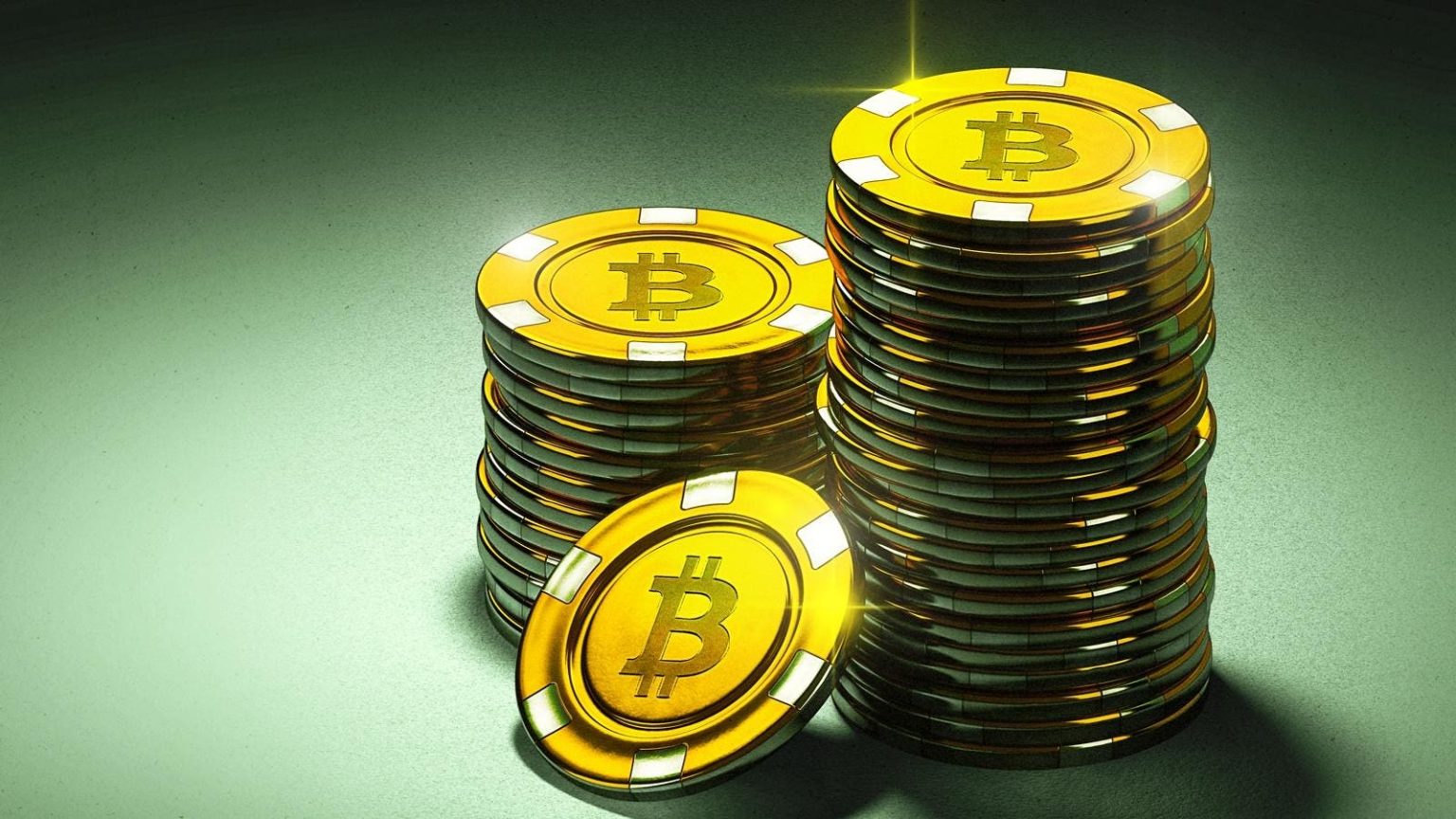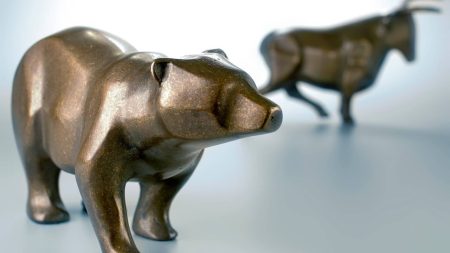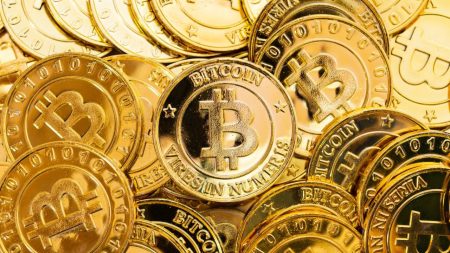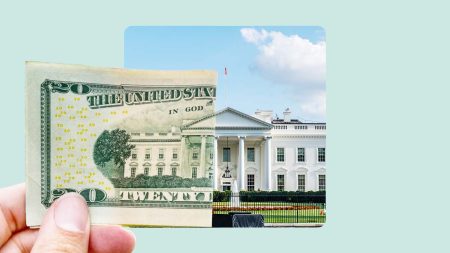Bitcoin’s breathtaking 2024 performance and its rise above $100,000, has captured the world’s attention. Here’s why one card-carrying value investor is bullish on the volatile digital asset.
By Taesik Yoon, Forbes Staff
My first trip to Las Vegas is one I remember very fondly. I was only about a year out of college when my best friend offered me a free flight to go with him for a few days. We stayed at the Hard Rock Casino, which was off the Strip at the time and exactly the kind of place where someone my age would want to be at with its party-like atmosphere, smaller and more intimate table gaming pit than the bigger casinos on the Strip, and some of the most generous comps.
Even 27 years later, this experience remains fresh in my mind. I can recall playing blackjack for hours. We started at $10 minimum bet tables. But a lucky streak early on had us quickly progressing to bigger bets per hand. I won about $1,700 my first two days there. On the third day, our fortunes turned. By the evening, my friend went from being up a few hundred to being down $750. Frustration set in and he decided to head to bed early.
I fared even worse with my $1,700 gain whittled down to just $300. But unlike my friend, I wasn’t done. Losing that much money had left such a bad taste in my mouth that I took the $300 I was still up, saw a $100 minimum table with no one there and said, why not? With luck back on my side, I turned that $300 into $3,000 in less than 20 minutes. In all, I came home having won about $3,600. For a 23-year-old living in New York City in the late 90s, this was a lot of money.
Sobering Foray Into Stock Investing
I bring this up because it’s often the first experience that shapes your view. My first trip to Vegas was about as good as it gets for someone in my circumstance back then. I had no fear of betting way outside my means because of the incredible luck I was enjoying and because I didn’t know any better. When you’re young, you haven’t accumulated enough life lessons to realize how reckless it is to bet $100 a hand when you only have $700 in the bank.
The same is true with investing in stocks. My first introduction to doing so came when I began working at Forbes, which just happened to be at the height of the Dot-com bubble in early 2000. Among the stocks recommended by my department in the six months prior to my arrival were eToys, VerticalNet and Healtheon, which took advantage of the insatiable demand for anything related to the Internet, whether a new website or a business that facilitated growth in its infrastructure. Those three gained 66%, 92% and 99%, respectively, in just two months, two-and-a-half months and three months. And the biggest beneficiary of this madness, Qualcomm, saw its stock soar something like 2,600% in the prior year. That’s not a typo.
By then, I had some money saved and opened my first brokerage account. Timing-wise, it couldn’t have been worse as that was right around when the web/tech wreck began. Two of the first stocks I purchased were ones that were recommended by our department during my first three months here, Net Perceptions and Wind River Systems, neither of which exist anymore. I can’t even recall what they did. What remains crystal clear, however, is the fact that I rode them all the way down the market slump that followed, ultimately losing 75-80% on these holdings. That was my baptism by fire and a sobering reminder that I knew nothing about buying stocks and really had no business doing so at that point.
Becoming A Value Investor
This would change in the years that followed as I went through the CFA program, became a stock analyst, and gained experience hunting for bargains in virtually every sector and industry that exists. But the poor experience from my first foray buying stocks never left me. I lost a lot of money on the two losers noted above because I—like so many others at the time—bought into the hype.
Shaped by this initial experience, as well as the value-oriented strategy associated with the stock recommending services I worked for, I avoided as much market hype as I could. Instead, I studied Warren Buffett, read Securities Analysis by Benjamin Graham and David Dodd (still considered the bible of fundamental analysis), and began primarily buying shares of companies selling at deep discounts to what I believed they were actually worth based on my research and analysis. In other words, I became a full-fledged value investor.
This meant I sought out companies with strong future cash flow potential, but was disciplined enough to only buy them when they became too cheap to ignore. For example, when our department recommended Amazon at $7.48, right after the equity market tanked in the wake of the tragic 9/11 terrorist attacks in 2001, I bought some myself. But it also meant when we recommended that our subscribers take their profits at $12.20 less than four months later, I did too. (Btw, those 200 shares I bought would now be worth about $880,000. Yeah, that one still stings.)
Yet with more hits than misses, I did well enough to be content with where my financial situation had grown to without having taken too many gambles. For every Amazon I got out of too early, there are dozens, maybe hundreds of failures like Kozmo.com I was able to avoid altogether due to the same discipline employed. You never heard of Kozmo? Exactly.
Introduction To Crypto
Knowing this, it’ll probably come as a surprise to find out that I began investing in bitcoin a few years back. After all, many that would call bitcoin the very definition of a hyped-up investment and exactly the kind of thing risk-averse value investors like me abhor. It’s something that produces nothing, pays nothing and, physically speaking, is quite literally nothing.
Yet that didn’t stop me from gaining my first exposure to bitcoin at the end of 2020. I bought 500 shares of Grayscale Bitcoin Trust (GBTC), which was really the only game in town if you wanted exposure to bitcoin through a fund. Since then, I’ve steadily grown this base through additional purchases of GBTC, as well as through new positions in Grayscale’s Ethereum Trust (ETHE) and another bitcoin ETF, the Bitwise Bitcoin ETF (BITB).
Some will undoubtedly point to the fact that based on when I made these purchases and where the prices of underlying cryptocurrencies (bitcoin and ether) were at those times and are now, I’ve done well overall with these investments and that this has created a bias that mirrors my first gambling experience in Las Vegas. But that wasn’t always the case. Indeed, I suffered through the terrible year that was 2022 where I saw my holdings tank more than 80% at the low from my original cost basis. In dollars, it was the most I’d ever lost on any investment—at least on paper.
That may have been enough for many to wash their hands of it and never look back. Instead, I did the opposite and bought more on the way down. Then I did something I rarely ever do, I bought on the way up. This includes my position in BITB, which didn’t exist until bitcoin ETFs were finally approved by the SEC earlier this year. At the time of my purchases of BITB in mid-January, bitcoin was trading at about $43,000, which was far higher than when I had last increased my exposure to the cryptocurrency through GBTC when it was around $28,000.
My Reason For Owning Crypto
So why have I—a self-proclaimed old-school value investor who had avoided hype for more than two decades—kept increasing my exposure to an asset that I believe has no actual intrinsic value? Simply put because my sons believe it does.
My oldest boy first asked me if I owned any bitcoin soon after he began first grade in the COVID-riddled 2020 school year. Even with all of the social distancing protocols in place, he’d heard one of his classmates bragging about how much money his dad made from bitcoin and wanted to know if I owned any too. I told him I didn’t and dismissed it as junk. Despite this, he still wanted to buy some anyway. He was six at the time.
It was then I realized that bitcoin is older than both of my sons. This means it’s been around their entire lives. More importantly, to them, it’s something that’s always had value. And this notion has only gained steam since then. Indeed, every day almost without fail my now ten-year-old checks the price of GBTC, which he currently owns ten shares of. He purchased this with the savings he’d accumulated over the years because to him, he’d rather have them than cash. I also believe my increasingly greater ownership of it provided legitimacy in his eyes that bitcoin had real worth ( despite the fact that he was the catalyst for my speculation in the cryptocurrency.)
Right now, it’s my generation and the one before it who probably have the most accumulated wealth of any. I believe this is among the biggest reasons why gold prices had surged last year to new all-time highs. We see it as a safe-haven asset that holds its value while also being considered a good hedge against inflation because that’s what it’s been our entire lives. But the only gold my older son knows is what’s around his neck. That gold chain he’s now wearing belonged to his grandpa, purchased roughly 40 years ago for the same reason my boy now owns bitcoin—because to him gold always had value and always would. Sadly, my dad’s no longer with us. And when my generation is all gone, it’ll be our kids who’ll dictate what does and doesn’t have value.
Some will argue that comparing bitcoin to gold isn’t fair since the latter is a physical asset that does have intrinsic value from its use in numerous technology products, including semiconductors, and other industrial applications. But let’s be real here, the latter only amounts to about 7% of the total gold mined. The rest of the gold produced around the world is used to make jewelry or coins and bullion. And I’d argue that the gold used in jewelry, which is about as discretionary a purchase as they come, is not only desirable because it’s pretty, but because of its perceived scarcity. That’s also a big reason why gold is universally accepted as a store of value. More importantly, there has never been a time in my life when gold didn’t have value way above its actual intrinsic worth.
The same is true of my boys and bitcoin. That is to say, we are a product of the times we grew up in. I was raised in a mostly analog world. I’m used to value being associated with something that’s tangible. Music and movies were delivered through physical media like cassette tapes, VHS, CDs and DVDs. Heck, I’m even old enough to remember the 8-Track and Betamax. My boys have no idea what these things are. For them, streaming from the cloud is as natural as renting videos from Blockbuster were to me and my friends. They’re part of a digital generation where everything comes from nothing. Bitcoin doesn’t need a physical presence when those most likely to determine its value in the future doesn’t need it to (or even want it to).
Be Willing To Lose It All
All that said, the crypto market still has many unknowns and carries plenty of risk. More than anything else, the number of cryptocurrencies need to drop by like 99.9%. Going back to the comparison to gold, there are 94 metals on the periodic table of elements. But only three of these are really viewed and accepted as a store of value—gold, silver and platinum. By comparison, there are currently about 270 different cryptocurrencies being traded on the popular crypto trading platform Coinbase and nearly 18,000(!) that it tracks overall.
It’s no coincidence that all my crypto holdings are in bitcoin with a small allocation in ether. To me, these have gained the most legitimacy among the general public and have become entrenched enough in the world view that they will effectively become the gold and silver of the global digital economy we now live in. My guess is most of the rest will eventually go the way of Kozmo.com.
Yet to invest in crypto you have to be willing to accept the risk that the entire market could go to zero. This is why if you plan on putting any money into it, it better be money you can afford to lose. I’m not the ignorant kid in my early 20s who didn’t know the consequences of making foolish financial decisions and believed he’d get rich quick by going all-in on the Internet boom. I know the risk I’m taking with these investments. But I also know that the lion’s share of the investment portfolio I’ve built up over the years for my family remains invested in value stocks, which are the antithesis of cryptocurrencies.
Continued Adoption Is Key
Of course, it’s one thing for something to be accepted as a store of value or medium of exchange and, thus, hold its value. To make investing in bitcoin worthwhile at the current price, there must be good reasons to believe it’ll keep going up.
That’ll largely be a question of supply and demand. The first part of this is known and quite favorable as the total potential supply of bitcoin is capped at 21 million—with more than 19 million already mined—and the growth in this limited supply will drop with every halving.
That means the key to higher prices is increasing demand. The good news is we’ve continued to see favorable market developments that have caused demand and adoption on the rise. The biggest of these was the approval and launch of numerous bitcoin ETFs in January 2024 that I noted earlier. In my view this was the primary catalyst behind bitcoin’s 66% gain in 2024 prior to the U.S. election on November 5.
The arguably more impressive surge in bitcoin from Election Day, which had it recently surpassing $100,000 for the first time and still up 42% since then despite pulling back a bit, also supports this view. That’s because this rally has been driven by the expectation that as a big proponent of cryptocurrency, President-Elect Donald Trump will implement policies that further increase demand for bitcoin and other tokens.
Thus, adoption is key. And above all else, buying bitcoin has to be predicated on the belief that demand will continue to rise. For some, this will be caused by what they tout as its key advantages, such as its decentralized blockchain technology that allows for accurate, quick and easy transfer of funds at little or no cost anywhere around the world. For me, this belief is driven by my view of who is most likely to determine its worth in the future, not today. Regardless of the motivations, as long as this results in increasingly greater demand for bitcoin, it will also create a growing imbalance between supply and demand, which usually bodes well for the underlying price. Some bitcoin bulls are even predicting a bitcoin price of $1 million by 2030.
That’s two years before my first son will graduate high school. Why is this important? Because my goal in investing in bitcoin isn’t to get rich quick. The allocation it commands in my total investment portfolio is part of my financial plan—one that involves funding the college educations for both my boys. Assuming each goes to a traditional university for four years and receive no financial assistance, paying for their post-secondary education will easily be the largest financial outlay my wife and I will have to make before we retire—and far bigger than our next sizable obligation, the mortgage remaining on our home.
I know there will undoubtedly be those who read this and think my rationale for buying bitcoin is ridiculous. It goes against every principle I believe in as a value investor. That’s undeniable. And if I’m wrong, this will be the most expensive lesson that both my oldest son and I will have ever learned. But it won’t be one that leads to financial ruin because my crypto holdings don’t comprise a big enough component of our family’s total investment portfolio to do too much damage if it all goes bust. It also shouldn’t jeopardize our ability to pay for our kids’ education since like many families, we’ve also been contributing to more traditional investments for funding their higher ed.
However, my crypto holdings are big enough that if I’m right, they’ll make this heavy financial burden far easier to assume. I may not be the carefree gambler I was in my youth. But even for an old-school value investor like me, that kind of upside is too compelling to pass up.
Chartered Financial Analyst Taesik Yoon was the editor of Forbes Special Situation Survey and Forbes Investor for more than fourteen years. He can be reached at [email protected].
MORE FROM FORBES
Read the full article here
















